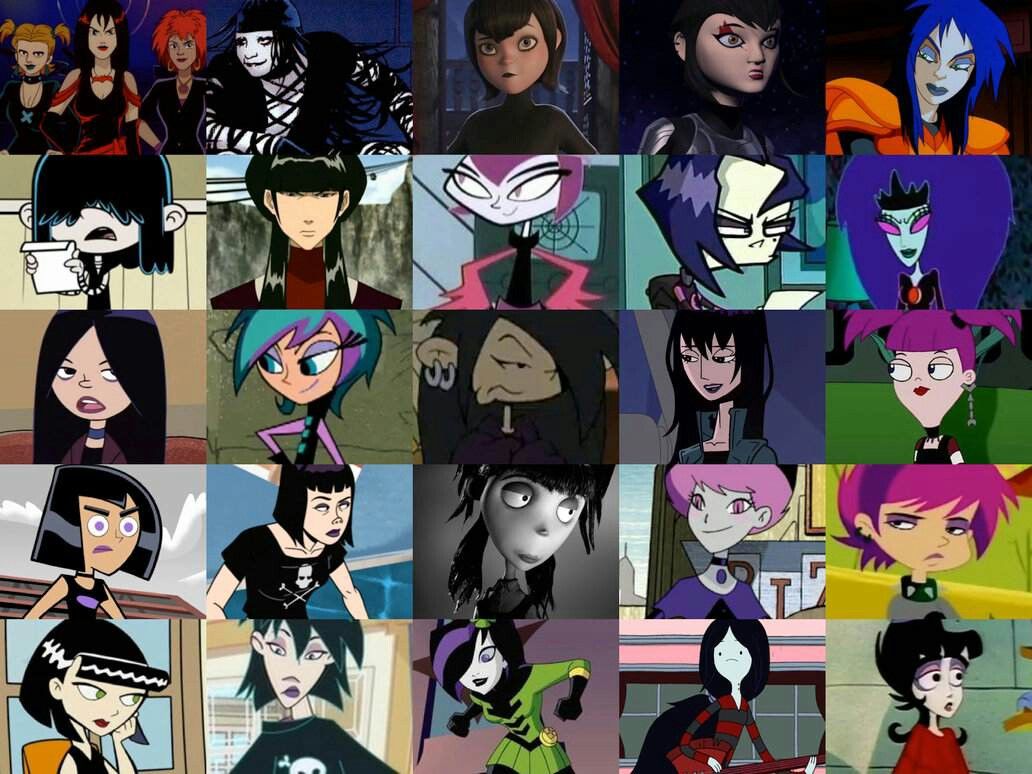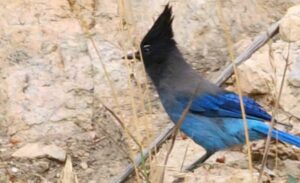Goth cartoon characters have long been a medium for creative expression, capturing the imaginations of audiences with their diverse characters and stories. Among these characters, a distinctive group stands out for their unique blend of dark aesthetics, quirky personalities, and often macabre settings: gothic cartoon characters. These characters, often adorned in dark clothing, pale complexions, and a penchant for the eerie and mysterious, offer a fascinating contrast to the typically bright and cheerful world of animation. This article delves into the world of gothic cartoon characters, exploring their origins, significance, and some iconic examples that have left an indelible mark on popular culture.
Origins and Significance
The gothic genre, with its roots in 18th-century literature, is characterized by elements of horror, death, and romance. It explores the darker sides of human nature and the supernatural. Gothic fiction, such as Mary Shelley’s “Frankenstein” and Bram Stoker’s “Dracula,” paved the way for the aesthetic and thematic elements that would later be adapted into various forms of media, including cartoons.
Gothic cartoon characters often embody a sense of rebellion against conventional norms, embracing individuality and the macabre. They resonate with audiences who appreciate the beauty in darkness and find solace in the unconventional. These characters often serve as a mirror to societal anxieties and fascinations with death, the supernatural, and the unknown, providing a safe space to explore these themes through humor and fantasy.
Iconic Gothic Cartoon Characters
Wednesday Addams from “The Addams Family”
One of the most iconic gothic cartoon characters is Wednesday Addams from “The Addams Family.” Created by cartoonist Charles Addams in the 1930s, the Addams Family is a satirical inversion of the ideal American family, embracing the macabre and bizarre.
Wednesday Addams, with her pale skin, dark braided hair, and deadpan expression, is the quintessential gothic child. Her morbid interests, such as playing with a guillotine and conducting experiments on her brother Pugsley, are portrayed with a darkly comedic touch. Wednesday’s character challenges traditional gender roles and societal expectations, making her a beloved figure for those who identify with her unique perspective.
Jack Skellington from “The Nightmare Before Christmas”
Tim Burton’s “The Nightmare Before Christmas” introduced audiences to Jack Skellington, the Pumpkin King of Halloween Town. Jack’s skeletal appearance, pinstripe suit, and boundless curiosity embody the gothic aesthetic.
Discontent with the repetitive nature of Halloween, Jack stumbles upon Christmas Town and becomes enamored with the holiday’s joy and color. His attempt to bring Christmas to Halloween Town leads to a series of humorous and poignant misadventures. Jack’s character represents the gothic theme of longing for something beyond one’s grasp and the journey of self-discovery.
Raven from “Teen Titans”
Raven, a character from the “Teen Titans” series, is a half-demon with a mysterious and brooding personality. Her dark, hooded cloak and mystical powers set her apart from her more colorful teammates.
Raven’s struggle to control her demonic heritage and her quest for inner peace are central to her character arc. Her gothic appearance and introspective nature make her a relatable figure for those who feel like outsiders or struggle with inner turmoil. Raven’s story highlights the importance of self-acceptance and the strength found in embracing one’s unique qualities.
Lydia Deetz from “Beetlejuice”
Lydia Deetz, from the animated series “Beetlejuice,” is another quintessential gothic cartoon character. Originally portrayed by Winona Ryder in Tim Burton’s 1988 film, Lydia is a goth teenager with a penchant for the supernatural.
In the animated series, Lydia forms a friendship with the mischievous ghost Beetlejuice, leading to a series of spooky and humorous adventures. Lydia’s gothic style, characterized by her dark clothing and fascination with death, contrasts with her kind and empathetic nature. She embodies the gothic theme of finding beauty in the macabre and forging connections with the unseen.
Marceline the Vampire Queen from “Adventure Time”
Marceline the Vampire Queen, from the popular series “Adventure Time,” is a complex character with a rich backstory. As a thousand-year-old vampire and rock musician, Marceline’s character blends elements of gothic and punk aesthetics.
Her pale skin, fangs, and rebellious attitude are hallmarks of her gothic persona. Marceline’s story explores themes of immortality, loneliness, and the search for identity. Her relationship with her father, the ruler of the Nightosphere, adds depth to her character, highlighting the gothic theme of familial conflict and the quest for self-understanding.
Sally from “The Nightmare Before Christmas”
Sally, another beloved character from “The Nightmare Before Christmas,” is a rag doll created by the mad scientist Dr. Finkelstein. Sally’s patchwork appearance, stitched together with various fabrics, and her sweet yet determined personality make her a memorable gothic character.
Throughout the film, Sally’s unrequited love for Jack Skellington and her efforts to prevent his misguided plans add emotional depth to the story. Sally’s character embodies the gothic themes of longing, resilience, and the search for belonging in a world that often feels disjointed.
Daria Morgendorffer from “Daria”
While not overtly gothic in appearance, Daria Morgendorffer from the animated series “Daria” embodies the gothic spirit through her cynical and introspective nature. Her dark sense of humor, disdain for superficiality, and intellectual approach to life resonate with the gothic sensibility.
Daria’s character challenges societal norms and critiques the banality of suburban life. Her thoughtful and often sardonic observations provide a refreshing perspective on teenage angst and the search for authenticity. Daria’s understated gothic qualities lie in her ability to see through the façade of normalcy and question the status quo.
The Cultural Impact of Gothic Cartoon Characters
Gothic cartoon characters have had a significant cultural impact, resonating with audiences across generations. Their unique blend of dark aesthetics and relatable struggles offers a counter-narrative to the often saccharine world of mainstream animation. These characters provide a sense of validation for those who feel different, offering a reminder that it’s okay to embrace one’s uniqueness and find beauty in the unconventional.
Moreover, gothic cartoon characters often challenge traditional gender roles and societal expectations. Characters like Wednesday Addams and Raven subvert the typical portrayals of young girls in animation, presenting them as strong, independent, and intellectually curious individuals. This subversion encourages viewers to question societal norms and embrace a broader range of identities and experiences.
The enduring popularity of gothic cartoon characters also speaks to the timeless appeal of the gothic genre. Themes of mortality, the supernatural, and the exploration of the unknown continue to captivate audiences, providing a rich tapestry for storytelling. Gothic cartoon characters bring these themes to life in a way that is both accessible and engaging, bridging the gap between the macabre and the whimsical.
Conclusion
Gothic cartoon characters occupy a unique and cherished place in the world of animation. Their dark aesthetics, complex personalities, and exploration of profound themes offer a refreshing contrast to the typical fare of the genre. From Wednesday Addams’ morbid curiosity to Jack Skellington’s quest for meaning, these characters captivate audiences with their depth and individuality.
As society continues to evolve, the appeal of gothic cartoon characters remains steadfast. They remind us that there is beauty in darkness, strength in individuality, and value in questioning the norms. Through their stories, we find a space to explore our own fears, desires, and identities, all while reveling in the delightful eeriness that only gothic characters can provide.
In celebrating these characters, we not only honor the rich tradition of the gothic genre but also embrace the diverse and multifaceted nature of human experience. Gothic cartoon characters, with their enduring charm and profound impact, will undoubtedly continue to enchant and inspire audiences for generations to come.












+ There are no comments
Add yours